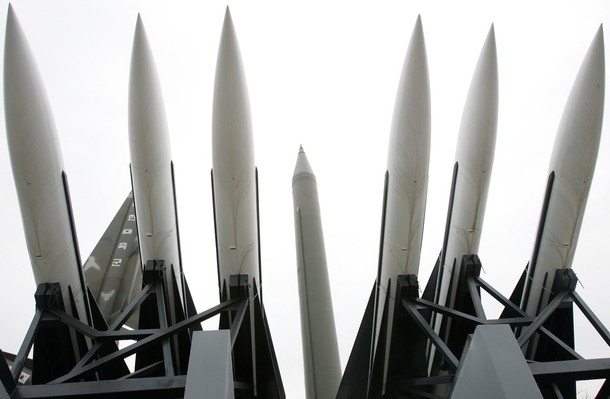South Korea is set to reach agreement with the US on expanding its ballistic missile range to better guard against attacks by North Korea, the South’s leader was quoted Thursday as saying.
The two allies are close to agreement on revising a 2001 deal that restricts Seoul’s missile range to 300 kilometres (186 miles), President Lee Myung-Bak said in an interview with Dong-A Ilbo newspaper and other media.
“Missiles with a 300-kilometre range can reach only the North’s frontline areas so there is a limit in our attack capability,” Lee was quoted as saying.
“The US… also sees our argument as fairly reasonable, so I believe that an agreement will be reached soon.”
The United States stations 28,500 troops in the country and guarantees a nuclear “umbrella” in case of war. In return, Seoul accepts limits on its missile capabilities.
Lee said Pyongyang’s missiles could reach the South’s island of Jeju, more than 400 kilometres south of the border, and stressed Seoul needs a “realistic adjustment” to its own missile range.
The need to bolster South Korea’s missile capability took on new urgency when North Korea allegedly sank a South Korean warship, killing 46 sailors, in March 2010.
It shelled a frontline island in November 2010, killing four South Koreans.
The South believes the North has 1,000 missiles of various types, many of them targeted at Seoul or other locations in the South.
These include medium-range missiles capable of travelling more than 3,000 km and able to hit US bases in Japan and Guam.
The North’s recent announcement that it would launch in April a rocket carrying a satellite — which Seoul and Washington call a disguised missile test — renewed concerns over the communist state’s missile threat.
The impoverished but nuclear-armed North held the first long-range test in 1998, sending its Taepodong-1 missile over Japan. But it failed to put a satellite in orbit.
A Taepodong-2 exploded after 40 seconds after launch in 2006. In April 2009 another Taepodong-2 travelled some 3,200 km to land in the Pacific.










